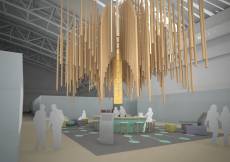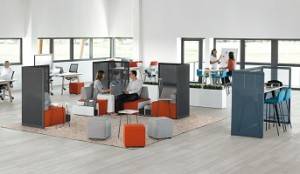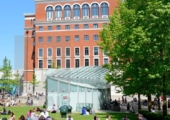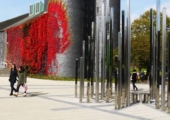September 24, 2014
‘Overwhelming evidence’ of link between office design, productivity and wellness claims report
 A new report from the World Green Building Council (WorldGBC) claims it has “overwhelming evidence” that office design significantly impacts the health, wellbeing and productivity of staff. Health, Wellbeing and Productivity in Offices: The Next Chapter for Green Building reports on a range of factors – from air quality and lighting, to views of nature and interior layout – can affect the health, satisfaction and job performance of office workers. Understanding the link between workers and their workplace helps to drive the business case for higher quality, healthy and greener buildings, valued by investors, developers and tenants alike. With salaries and benefits typically responsible for 90 percent of an organization’s expenditure, any higher construction or occupation costs are far outweighed by even small improvements in staff performance.
A new report from the World Green Building Council (WorldGBC) claims it has “overwhelming evidence” that office design significantly impacts the health, wellbeing and productivity of staff. Health, Wellbeing and Productivity in Offices: The Next Chapter for Green Building reports on a range of factors – from air quality and lighting, to views of nature and interior layout – can affect the health, satisfaction and job performance of office workers. Understanding the link between workers and their workplace helps to drive the business case for higher quality, healthy and greener buildings, valued by investors, developers and tenants alike. With salaries and benefits typically responsible for 90 percent of an organization’s expenditure, any higher construction or occupation costs are far outweighed by even small improvements in staff performance.























October 21, 2014
Orgatec preview: the next generation workplace is all about settings
by Justin Miller • Comment, Events, Products, Workplace design
There is a well travelled international circuit for those interested in what office design tells us about the way we work that has, for a number of years, taken in London, Milan, Chicago, Stockholm and Cologne as its main stopping off points. This week sees the launch of Orgatec, the longstanding biennial workplace festival in Cologne. One of the interesting features of Orgatec is that, because it takes place every two years, it offers snapshots of key developments in the market. It throws a spotlight on whatever workplace professionals are talking about and whatever product designers are doing in response to the changing world of work. And it does it on a big scale. This year over 600 companies from 40 countries will be presenting across an exhibition area of 105,000 sq. m. This seems big, and is, but is down markedly on the size of the show from 20 years ago when Orgatec was the launch pad for seminal products such as Herman Miller’s Aeron Chair and the Ad Hoc furniture system from Vitra.
(more…)